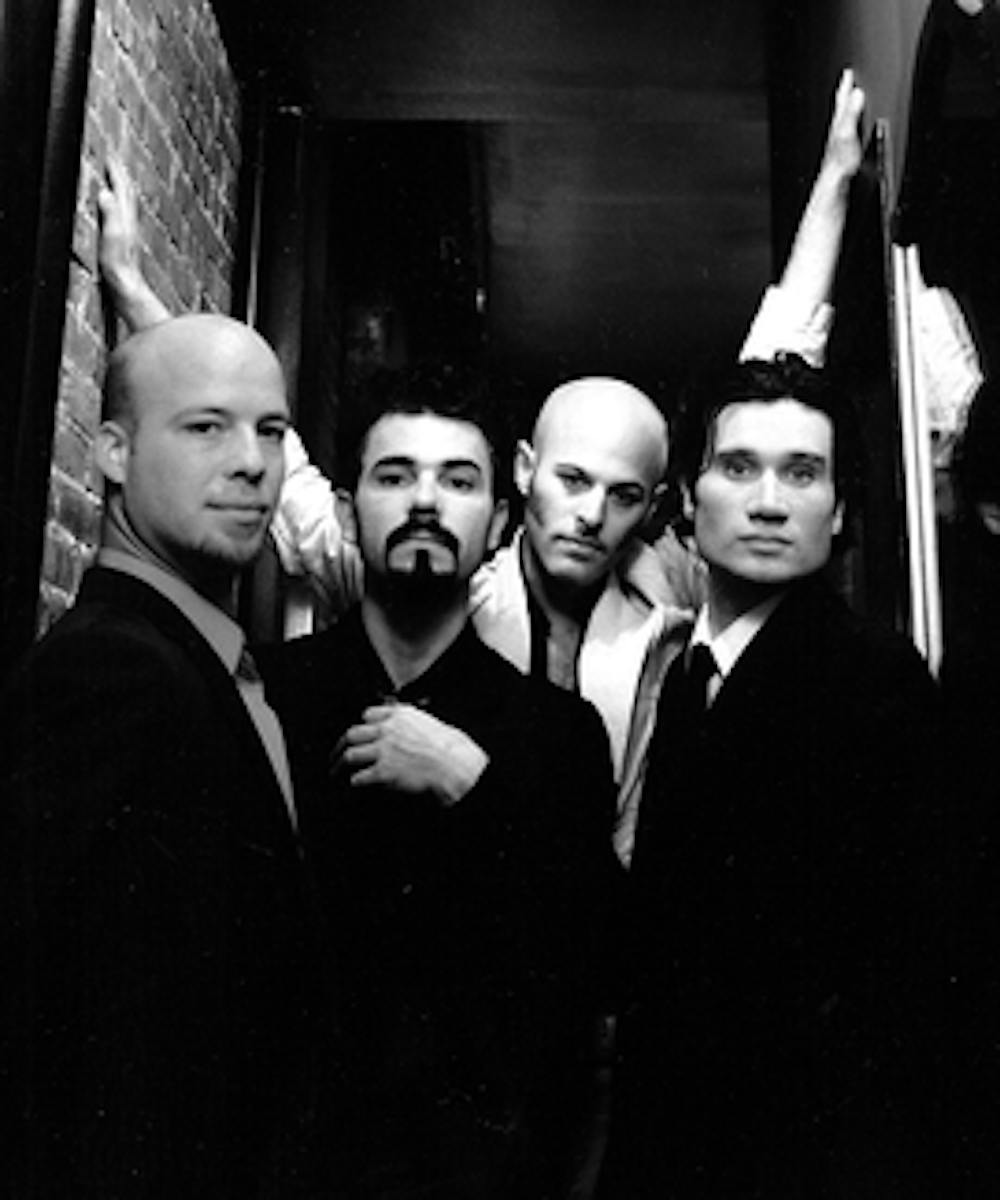After a decade of bloodletting and licking the wounds of intra-band conflict, Shudder to Think resumed the work of being friends and fantastic showmen this past Saturday. At the Virgin Mobile Fest, alongside industry icons Bob Dylan, Chuck Berry and the Stooges, the band reclaimed their title as the most sonically independent band to rise and fall - and rise again - out of the Dischord Records catalog.
Frontman Craig Wedren, guitarist Chris Matthews, drummer Mike Russell and bassist and AU alumnus Stuart Hill founded Shudder to Think in 1986, when the hardcore-dominated D.C. music scene was experiencing a sea change. Restless with boiled-down-to-the-basics style, bands started experimenting, taking risks and redefining D.C.'s sound, or in Shudder to Think's case, defining a sound of their own.
Wedren said the band decided to present an "alien" take on the style their Dischord label-mates, Fugazi, pioneered.
"I'd come from Cleveland where I was playing in more sort of new wave bands ... so my vocal style just wasn't D.C. hardcore," he said. "At first we thought it sounded horrible - 'You got your chocolate in my peanut butter' type of thing - but then it wound up being this really great Reese's peanut butter cup. And it tasted real good."
In the beginning, however, few agreed. The band's mash-up of hardcore, glam, pop-era and counterintuitive compositions are tough to crack. After Shudder to Think recorded three albums on Dischord, they moved to New York and signed with Epic. In 1994, the band (then with Wedren's longtime friend Nathan Larson on guitar and Adam Wade on drums) reached its apex with "Pony Express Record," a subversively detonated album that still stuns and wins fans.
"By the time we made 'Pony Express Record,' everybody in the band was on exactly the same page," Wedren said. "So it created this really singular sounding and feeling thing. And I think that was the last moment where that happened in Shudder to Think."
After 1997's "50,000 B.C.," which included drummer Kevin March, the band hit a wall. They were running on empty and full of creative energy too abstract to fit into the "straight jacket" of four-minute, 12-to-an-album songs, Wedren said. So they left the record industry and began recording soundtracks for independent filmmakers and friends.
"Our 'High Art' soundtrack is mostly composed on wine glasses - just the sounds wine glasses make," he said. "That felt much more in keeping with the Shudder to Think ethos than making another guitar-based album at the time."
The jump from records to reels was actually very fitting, in retrospect, Wedren said.
"In a way, what was going on in the New York independent film world in the late '90s was very akin to what was going on in the early-mid '80s in D.C.," he said. "It was a lot of creativity and a lot of excitement, and people were just trying stuff."
The band's film work began with the former Lemonheads bassist Jesse Peretz's 1998 film "First Love, Last Rites." Wedren and Larson wrote the soundtrack's music and lyrics and recruited the vocals of friends like Billy Corgan and Jeff Buckley, who's been a Shudder to Think fan since 1992's "Get Your Goat." Tragically, Buckley's soulful recording of Larson's "I Want Someone Badly" would be his last.
Shudder to Think continued soundtrack work with "High Art" and "Velvet Goldmine," Todd Haynes' 1998 biopic of a bi-curious Bowie, Md.-based character that included a very young and very glamorous Jonathan Rhys Meyers in the starring role. But when Larson quit that same year, frustrated and wanting to front his own band, Shudder to Think did, too.
"We were rather lost," Wedren said. "It just felt like we only had about three seconds before it would implode. So it was like, let's push the pause button here, keep it beautiful, and go off and do our own thing."
Larson went on to fulfill his aspirations, and Wedren began his solo career. The two wouldn't share the stage again until last year, when a mutual friend organized a small show in downtown New York, Wedren said.
"[Larson and I] would have these annual summits where we would bloodlet a little and get a little more and more pus and venom out," he said. "So we just kind of thought, 'Let's play three or four Shudder to Think songs, we'll tack them onto the end of my solo set,' and so we did that and it was just great."
Today, both continue soundtrack work - Wedren is currently working on "Wet Hot American Summer" director David Wain's next film - and guitarist Mark Watrous is juggling tours with both Shudder To Think and the Raconteurs. Add old wounds and new families to the busy mix, and Shudder to Think's "patchwork tour" of 11 weekend shows over the next three months constitutes a fragile, albeit strongly desired, reunion, Wedren said.
"We're wading back into the ocean one toe at a time," he said. "We're talking about maybe doing some recording stuff, but we'll see what happens. We will do it as long as it feels positive and creative. And the minute it doesn't, we will stop"





